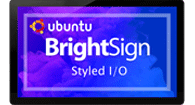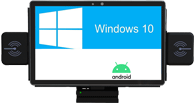
Commercial Tablet O/S: Which To Choose & Why
2020-04-24On the basis of the operation system, the commercial tablet global market is categorized into Android, Windows, iOS and Linux.
With Android is seemingly becoming the dominating operation system (O/S) for most of retail signage projects, other O/S are also playing high-impact roles in different end-use industries like iOS for fashion & luxury segment, Windows for healthcare & education, government, And Linux is also very popular for some top-level, highly purpose-built projects due to the obviously advantages.
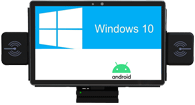 Windows Commercial Tablet With Peripheral Kit
Windows Commercial Tablet With Peripheral Kit
For a custom signage project, what operation system should we choose, it is mainly based on several factors like the following:
- Performance : Hardware configuration.
- Cost: purchase cost, as well as switch cost if changing from existing OS to a new one.
- Support: ease to get update on hardware and software, parts availability in next 5 years, compatibility with the hardware manufacturing ecosystem.
- Buyer’s Internal Team and engagement depth in product development & innovation.
1# Performance: Hardware configuration
This is two sides of a coin, at one side, today’s hardware configurations are very high already, but at the other side, the Andy and Bill Law has swallowed too much hardware performance by continuously updating the O/S.
Andy and Bill Law is playing a very deep impact for OS of Android, Windows & iOS.
If the end-use application is very simple, while people choose O/S like Android or Windows to rule the hardware, then it means a huge part of hardware performance has been wasted compared to Linux OS, which is light-weight, running on very low RAM to afford the end-use applications.
2# Cost
Cost is always a main factor, here there is an invisible part of the cost called switching cost, for example, if switching from Windows to Android, for some industries like healthcare, government, education, the switching cost mainly comes from the app development, in most cases, these industries have special regulations to evaluate and approve the new alternative applications.
3# Support
Windows is a closed ecosystem, thus, it is different with Android in which every developer could modify the system level code to their own convenience; Android is an open-source platform, but chipmakers O/S level SDK is not open-source. So Android is very friendly to app-developers, but in most cases, it still requires chip-makers’ support for many critical features. Compared with Windows & Android, Linux is widely used for hobby & DIY market due to its newly 100% open source ecosystem except the hardware design schematic is not open to public.
4# Buyer’s Internal R & D force
If you are an android app developer, the most preferred O/S may be Android ; In addition, if you feel exhausted to manage the different app versions with Android O/S updates from android 4.4, android 5.1, android 6.0, android 7.1, android 8.1, to android 9.0…, you may want to try Linux and start building the kernel level drivers, video codecs etc, even if it is always very time-consuming and challenging at the beginning.
But this journey may pave a way to success, please note that Brightsign media players running its proprietary Linux-based apps take a biggest market share for digital signage segment.
Understanding the 4 decision factors, we have refined our commercial tablet lines into the 3 categories:
- Android: for most of retail signage projects when end-users have access to android application developers.
- Linux: For customers who have deep knowledge about their application and have the internal R& D force to develop their own Linux based app, And we have built our hardware to be friendly to the open-sourced PI inspired hardware, via plug & play basis for implementation.
- Windows: We have built a handheld POS peripheral kits with interchangeability so that we would use modular based commercial grade Windows / Android tablet to build a versatile POS station without the burden to manage different tablets hardware, when I/O and peripherals interchanging are not a challenge.
Other popular news
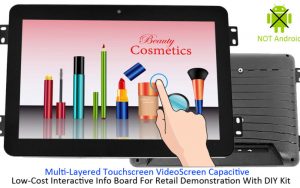
Non-Android Touchscreen Solution: Why Do The Seasoned Retail Integrators Prefer ?
5 years ago, we released our 4K media player with 512MB super small RAM and hardware video decoder...
 2018-10-23
2018-10-23
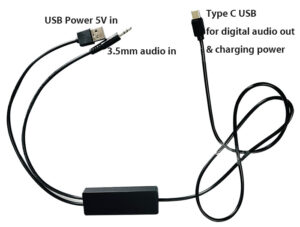
Bluetooth Headphone Display Solution For Retail Demonstration, Updated.
5 years ago, we released our 4K media player with 512MB super small RAM and hardware video decoder...
 2022-02-23
2022-02-23
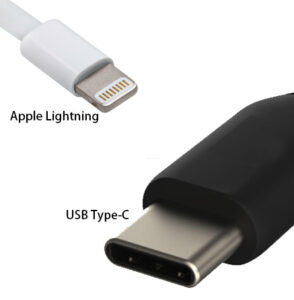
What Trouble Do We Meet With Apple Lightning & Type-C For Audio POP ?
5 years ago, we released our 4K media player with 512MB super small RAM and hardware video decoder...
 2017-11-30
2017-11-30


